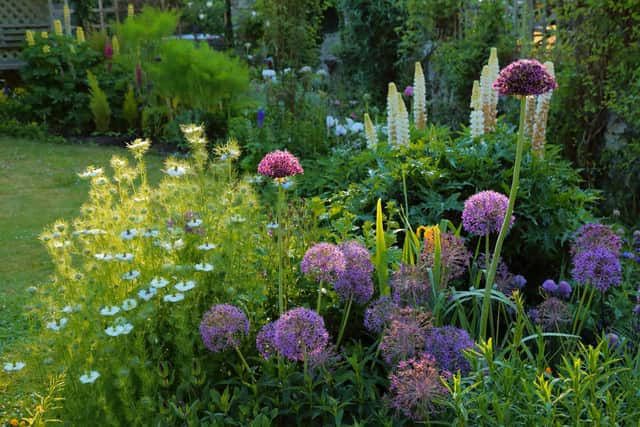Use these six expert tips to keep your garden flood and drought resistant
and live on Freeview channel 276
Heatwaves and droughts coupled with heavy rainfall and flash floods are not a great combination, but the good news is that there are steps you can take to help protect your garden and home.
Hard landscaping experts, Marshalls, have shared the three best ways to drought-proof your garden and three top tips to protect from flooding; to prepare for the UK's unpredictable weather.
To create a drought-tolerant garden;


Get a good balance of soft and hard landscaping
Advertisement
Hide AdAdvertisement
Hide AdWith grass and plants being the biggest drain to your water supply, one of the first things to do in your garden is create a design with a mix of soft and hard landscaping.
Incorporate hardscape spaces like shaded patios with a balance of trees and plants, which serve to provide shade, add moisture to the atmosphere and aid cooling.
Choose drought-tolerant plants


Drought-tolerant plants include succulents, rock garden plants, certain native shrubs and trees, wildflowers and ornamental grasses.
Identify which areas are driest and which get more sun or shade, then group plants together according to their needs - the idea being you only water where necessary.
Advertisement
Hide AdAdvertisement
Hide AdKeep plant selections simple - a few varieties can make a big impact with less cost and effort.
Incorporate more native plants


Some of the most drought-tolerant plants are considered native wild plants in particular regions. These native species have naturally adapted to our soil and climate. They are dismissed as weeds by many, but some are food plants for caterpillars.
Three top tips for creating a flood-tolerant garden
Permeable paving is key
In areas of your garden with paving elements, it's best to incorporate permeable elements over non-permeable ones, to have a garden that can withstand weather conditions.
Permeable paving is designed to allow rainwater to soak through the surface, and into the ground below – so preventing it from entering sewers.
Amend soil composition
Advertisement
Hide AdAdvertisement
Hide AdAreas in your garden where vegetation exists are typically natural soils, although the condition and type can vary.
Dry soil decreases the chance of your plants and landscape surviving in extreme weather conditions, but you can improve soil quality by applying a mulch of organic matter, or gravel. This will increase its capacity to retain rainwater in times of drought and stop surface-level evaporation.
Reduce rainwater run-off
If you have a shed or any outbuildings, try adding a green roof to reduce rainwater run-off. It is crucial to check larger roofs can take the weight, but they are an easy DIY project if the roof is suitable. Green roofs boost biodiversity, depending on the planting, (sedums, for example are good) to support our native bees.
Consider rainwater collection. Rainwater should be seen as a resource. You could set up a rain chain from a greenhouse into a container.
Advertisement
Hide AdAdvertisement
Hide AdAnna Hampshire, head of marketing at Marshalls said: “As the UK tussles with climate change, we are experiencing record highs of inconsistent weather conditions.
"To keep our gardens healthy, preparation is key. In times of hosepipe bans, consider a rainwater butt, a rain garden planter, or using grey water from baths or showers.”
For more ideas visit: www.marshalls.co.uk/gardens-and-driveways